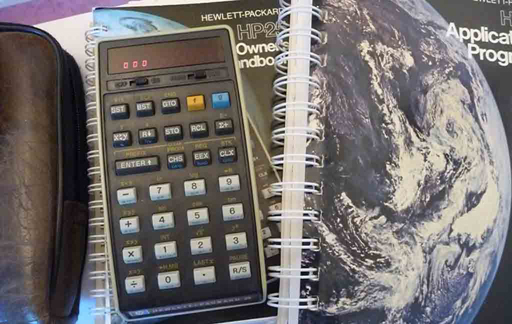The 'Woodstock' generation
In this article I will detail the hardware of the second generation of HP pocket calculators.
Named ‘Woodstock’ this family was introduced in 1975 as a natural evolution of the ‘Classic’ first generation, which comprised 6 models from the HP-35 to the HP-65.
At introduction, in 1975, the Woodstocks were 3 :
- HP-21 (1975-02-01, ‘Pumpkin’, $125) a basic scientific calculator,
- HP-25 (1975-08-01, ‘Squash’, $195 ) a programmable scientific calculator and
- HP-22 (1975-09-01, ‘Turnip’, $165) a business model.
The family was supplemented later:
- by ‘Continuous memory’ models 25C (1976-07-01), 29C (1977-07-01) and 19C (1977-09-01),
- by ‘Printing’ models HP-10 (1977-07-01) HP-91 (1976-03-01), 92 (1977-07-01),
- by a ‘All seasons’ model (doing did math, statistics and business functions ) : HP-27 (1978-09-01),
- and by high end ‘Mag card programmable’ models : HP-67 (1976-07-01) , 97 (1976-07-01) and 97S (1977-12-01).
The Woodstock family took benefits from LSI rapid evolution and adopt a low cost profile (except the 67 & 97) allowing for the first time a less than $200 programmable calculator.
For many scientists of my generation, in fact, HP-25 was the first programmable they could buy.

The HP-21, 22 and 25 form the base of this new family. The used the proven P-MOS (Positive Metal Oxide Semiconductor).
The HP-21 was a basic scientific calculator essentially, evolution of the HP-35 with more features (radian mode, Polar-Rectangular conversions, Storage arithmetic, 33% more ROM, smaller size, for a less expensive price ($125).
The HP-22 was the first business member new family having much more capabilities than its predecessor the HP-70, among many others : remaining balance, linear regression, linear estimate, arithmetic mean, and standard deviation etc. It also had more storage registers (RAM) than the HP-21 : 10 registers.
But the real 'breakthrough' was the HP-25.
The HP-25 had a larger set of scientific functions than the HP-21, more ROM and enough RAM to make 8 user registers and 49 steps of program memory (See the full list of features in 'The Museum of HP Calculators').
Its use of merged key steps (storing multi-keystroke entries in one step like 'f ln' as '01 14 07', 'STO * 0' as '02 23 61 00' or 'TTO 10' as '03 13 10'. made its programmation much easier than with the HP-55 though it remained less powerful than the HP-65 (no labels, no subroutine and -of course- no card to read or write programs. HP introduced also for the first time the so called 'Engineering Notation Display' allowing numbers to be shown with exponents of ten that are multiples of three, linking notation directly to units (milli, micro, nano pico etc...).
Later in the HP-25C and HP-29C (C-MOS) Memory chips were introduced to implement ‘continuous memory’ in fact continuous very low powered state, in combination with N-MOS and P-MOS circuits.
The major evolution in the 21 and 25 was a new microprocessor chip the ACT (Arithmetic, Control and Timing) combining the functions of the Classic’s C&T, A&R and Clock driver circuits ; reducing in one chip size and cost.
The ACT was slow (one second maximum for pre-programmed functions : see comparison benchmark with the Classic series).
Though the RPN stack remain the same, the new chip used a wider 12 bit address space (4096 instructions max), a revisited instruction set, 8 * 56 bit internal registers, 16 flags, 2 levels of return addresses and a 4 bit register to store the display format at run time.
The new Arithmetic unit was now able to perform operations in hexadecimal as well as decimal format.
The HP-25 model has a RAM chip that allowed 8 addressable registers and a maximum of 49 program steps.
The basic HP-21 had 1/3 more ROM than the HP-35, so many additional features could be implemented the most important being trigonometry in radian and degree mode and Polar/Rectangular conversions.
To reduce the size, the number of digits in the display was reduced from 15 digits to 12 though internally the mantissa digits were kept.
The power unit of the HP21, 22, 25 … series was clearly designed to reduce cost.
Two 1.2 volts NiCad rechargeable batteries powered the units (instaed of 3 on the 35), the charger being a simple transformer (instead of a double circuit comprising a voltage source operating the HP-35 and a current source charging the batteries), the rectifier being a single diode (instead of a full diode bridge ahead of a Darlington+Zener emitter-follower as voltage regulator in the Classic 82002A charger) , and the charging current source a simple resistor.
Less than a few dollars at that time ; unbeatable!
But all in all, it performs well and I still have a working HP-25 on my desk!
The cheap trend is also visible in the packaging compared to the Classic series : 2 screws instead of 12 to attach the different parts together; the keyboard being heat staked to the machine’s faceplate.
But for 1975 the young engineer that machine was for $195 an open door to programmation or as stated by HP : "The only limits to the flexibility of the HP-25 are the limits of your own mind.
Good point.